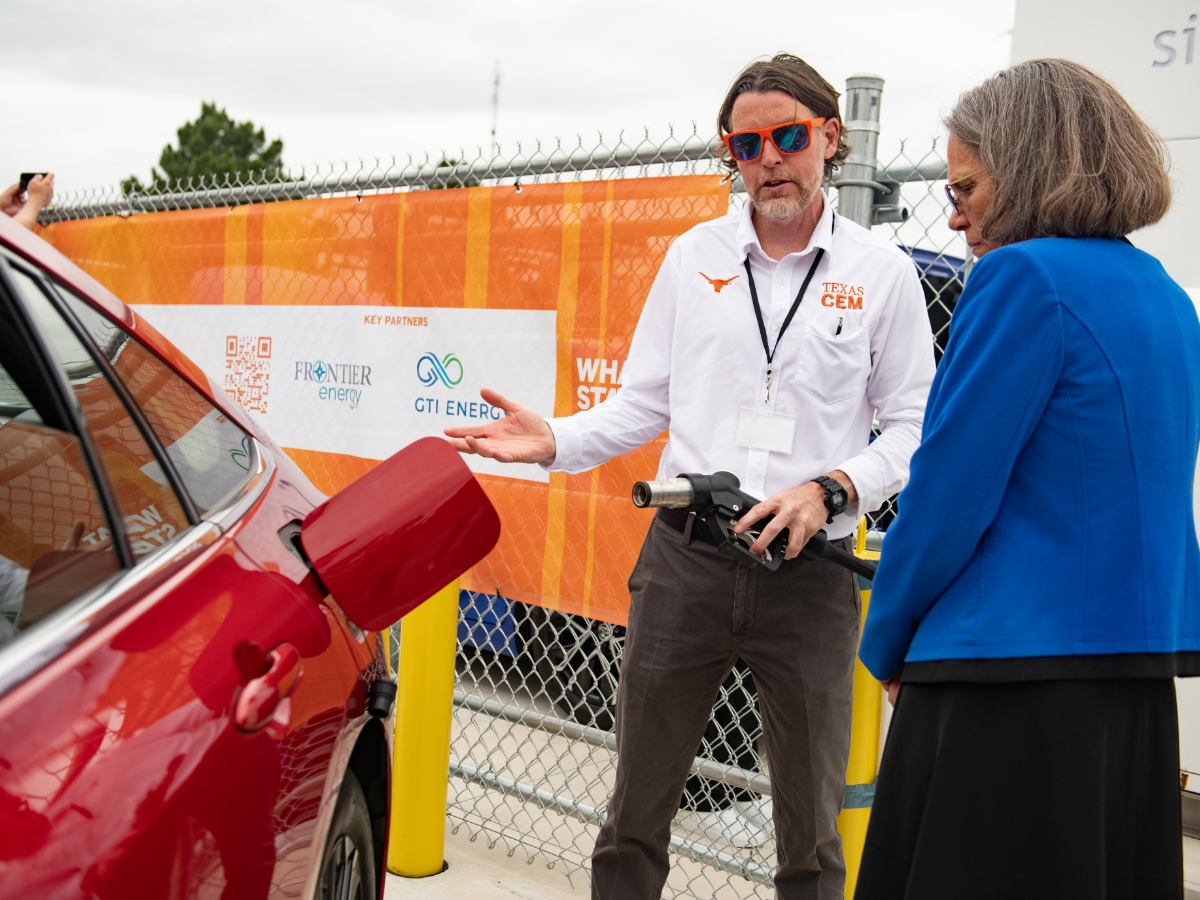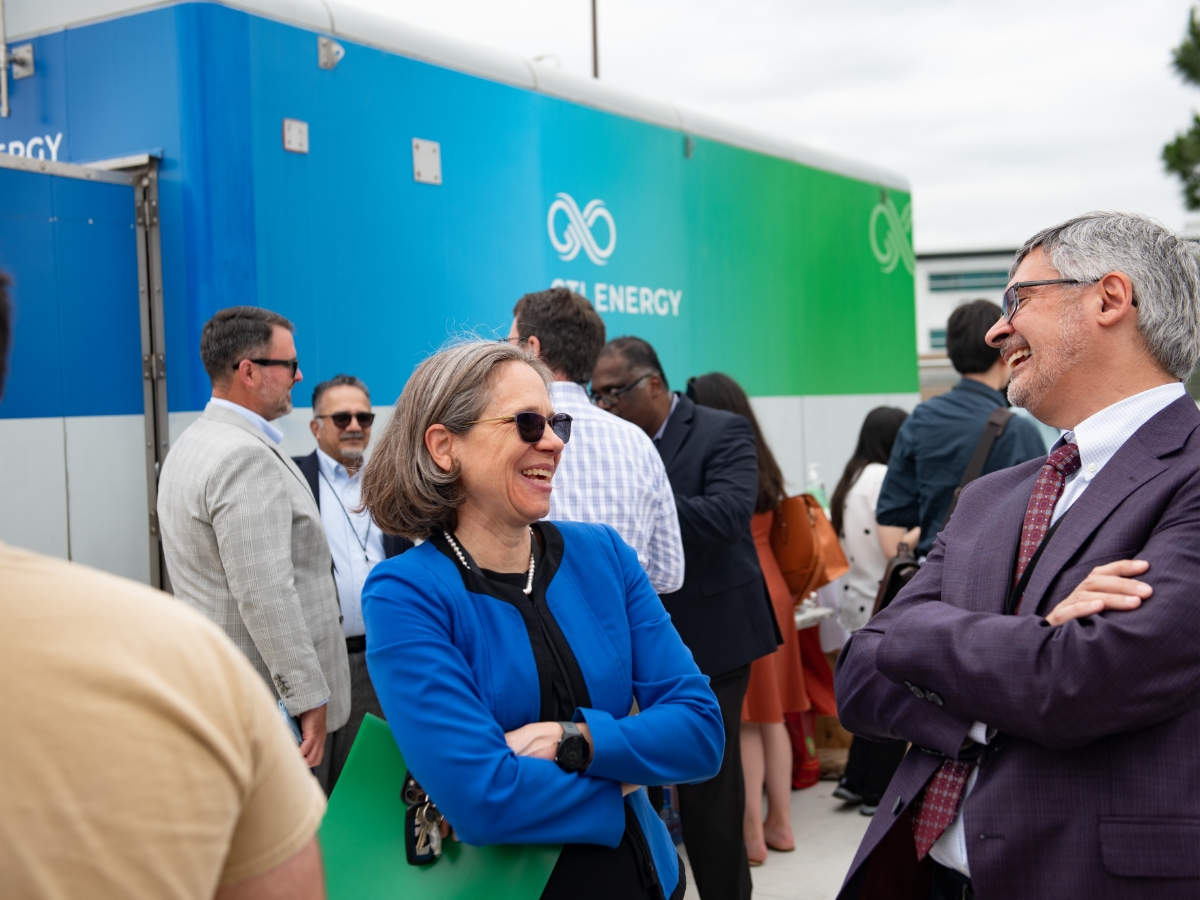First-of-its-Kind Hydrogen Proto-Hub Galvanizes Production of Low-Carbon Hydrogen

The University of Texas at Austin’s Center for Electromechanics, Frontier Energy and GTI Energy today hosted the grand opening of a new hydrogen research and demonstration facility.
The facility, located at UT Austin’s J.J. Pickle Research Campus, will generate zero-carbon hydrogen using water electrolysis powered by solar and wind energy, as well as steam methane reformation of renewable natural gas from a Texas landfill. The hydrogen will power a stationary fuel cell for clean, reliable power for the Texas Advanced Computing Center and supply zero-emission fuel to a fleet of Toyota Mirai fuel cell electric vehicles and to fuel cell drones. This approach marks the first time that multiple renewable hydrogen supplies and multiple end uses have been networked at a single location to demonstrate a scalable, economical hydrogen ecosystem.
It was developed as part of the “Demonstration and Framework for H2@Scale in Texas and Beyond” project, supported by the U.S. Department of Energy’s (DOE) Hydrogen and Fuel Cell Technologies Office. This first-of-its-kind hydrogen proto-hub is a significant leap forward in the clean hydrogen economy.
“H2@Scale in Texas builds on nearly two decades of UT leadership in hydrogen research and development. With this facility, we aim to provide the educated workforce and the engineering data needed for success,” said Michael Lewis, research scientist at the UT Austin Center for Electromechanics. “Beyond the current project, the hydrogen research facility is well-positioned for growth and impact in the emerging clean hydrogen industry.”

UT Provost Sharon Wood and Michael Lewis from the Center for Electromechanics chat about the hydrogen-fueled Toyota Mirai.
More than twenty industry stakeholders and sponsors are involved in this effort, which will showcase the technology needed to expand hydrogen’s role in decarbonization while also raising awareness of hydrogen as a clean energy source.
“We launched the H2@Scale initiative with our labs years ago to pave the way for pilot projects that help advance both clean hydrogen innovation and scale up,” said Sunita Satyapal, director, DOE Hydrogen and Fuel Cell Technologies Office, and hydrogen program coordinator. “I am so pleased to see this project underway to help guide future larger-scale clean hydrogen deployments and make progress on America’s clean hydrogen strategy.”
Launched in 2020, the H2@Scale project aims to develop and demonstrate paths to renewable hydrogen as a clean and cost-effective fuel. The facility is both a unique academic research center, as well as a model for future large-scale hydrogen deployments, showcasing a fully integrated hydrogen ecosystem that includes production, distribution, storage, and end-use.
As part of the project, a recently released study highlights Texas’ strong position for clean hydrogen production. The state’s existing hydrogen infrastructure and abundant wind and solar resources make it a prime candidate to help meet the world’s hydrogen demand.

UT provost Sharon Wood and Cockrell School dean Roger Bonnecaze at the H2@Scale event.
“H2@Scale isn’t just about producing low-carbon energy, it’s about creating clean energy growth opportunities for communities throughout Texas and the nation,” said Adam Walburger, president, Frontier Energy. “By harnessing renewable energy resources to create zero-carbon hydrogen, we can power homes, businesses, transportation, and agriculture – all while creating jobs and reducing emissions.”
“Through public-private partnerships enabled by H2@Scale, DOE continues to build on its role as an accelerator for the collaborative early-stage research, development, and demonstrations needed for effective energy system transitions,” said Paula Gant, president and CEO, GTI Energy. “By demonstrating a fully integrated hydrogen ecosystem, H2@Scale is a proving ground for the powerful potential of large-scale Regional Clean Hydrogen Hubs in building a robust hydrogen economy in ways that benefit local communities whether through skilled job creation, cleaner air or strengthened energy access.”
Participants in the DOE-funded HyVelocity Gulf Coast Hydrogen Hub are poised to gain valuable insights from the H2@Scale project at UT Austin, which will inform the development of a comprehensive hydrogen network across the region.
